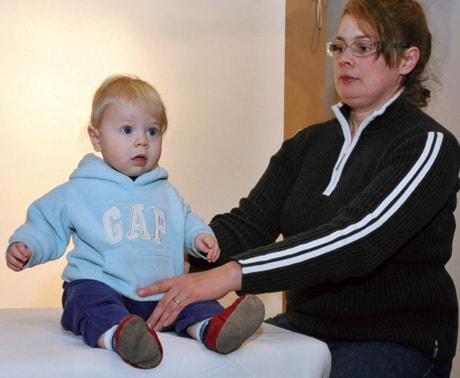TORONTO — Travel can be stressful, especially now with ever-expanding airport security checks.
But for many travellers, the troubles begin long before arriving at the airport.
“I’ve had them throw up, pee, everything,” says David Donaldson.
He is the owner and photographer at Portraits Plus, a Mississauga, Ont., photo studio that specializes in passport pictures for babies, a seldom-scrutinized travel challenge confronting thousands of Canadian families.
It used to be that children could travel on a parent’s passport.
Since 2001, however, Canada, like other United Nations members, has adopted International Civil Aviation Organization standards, requiring every individual who travels internationally to have an official identification document.
The policy was put in place to guard against child abduction, says Passport Canada spokesman Jean-Sebastien Roy.
Demand intensified two years ago when the United States began requiring every person arriving by air to have a passport.
Since last year, Canadians driving across the border or arriving in the U.S. by boat have had to have passports, too.
Last year, Passport Canada issued about 4.3 million passports, and about five per cent — or 250,000 — were to children under age three.
But obtaining documents for tiny travellers is no small matter.
Although the federal government says it recognizes the difficulty in capturing a “neutral expression” on the face of a newborn, children generally have to meet the same requirements as adults when it comes to passport pictures, which is enough to make many of Donaldson’s clients squirm.
The length of the face between the top of their head and their chin must be between 31 and 36 millimetres, eyes must be open and only the head and shoulders should be in the picture. No hands.
The federal government will cut some slack; it’s usually OK if a tongue hangs out and, unlike adults, babies can smile.
Getting an acceptable picture can take as little as 20 minutes, says Donaldson, but he’s also spent as long as seven hours getting the job done.
“You wait for those two minutes the baby’s eyes are open during the day, usually right after the baby is fed ... before they are relaxed,” he says from his studio.
Donaldson photographs between five and 10 babies most days and typically takes about 20 frames to get one that meets federal requirements.
In some ways, the rules have pitted babies against the bureaucracy, as one woman discovered when she took her three-week-old for a passport picture in advance of a trip to Florida over the Christmas holidays.
At that time, the baby rarely opened her eyes and the no-hands rule was a challenge since, from almost the moment she was born, she’s kept tiny fists close to her face, fingers curled into palms.
The first pictures, taken at a national drugstore chain, were initially approved by a passport office employee who scrutinizes documents when you walk in the door. But the photos were ultimately rejected.
Photos can also be rejected if there is a hint of a shadow around the baby’s head.
Infants can be laid against a white or light-coloured background and photographed from above, or placed in a car seat covered with a white or light-coloured fabric.
Gabrielle Laurence and father Kevin Kraliz had three-month-old daughter Mae’s passport photos done for a family trip to the Caribbean.
But it wasn’t easy.
“She couldn’t really hold her head up, so the photographer laid her down on a white towel,” recalls Laurence.
“Each time I held her head until he was ready and then each time she’d turn her head around!”
Eventually they managed to get a usable shot and Mae got her green light to travel.
Roy recommends going to a photographer experienced in the field.
After all that work, one might wonder about the shelf life of a passport for babies.
How useful can it be as an identification document, since kids’ appearances can change so quickly?
“You can’t tell me a three-day-old baby won’t change in two weeks,” Donaldson says.
Passports for children three and younger are valid for three years.
But since their looks do change so rapidly, children who have been issued a passport before the age of one are entitled to one free replacement, Roy says.
It just means filling out a new application form and, of course, more pictures.
